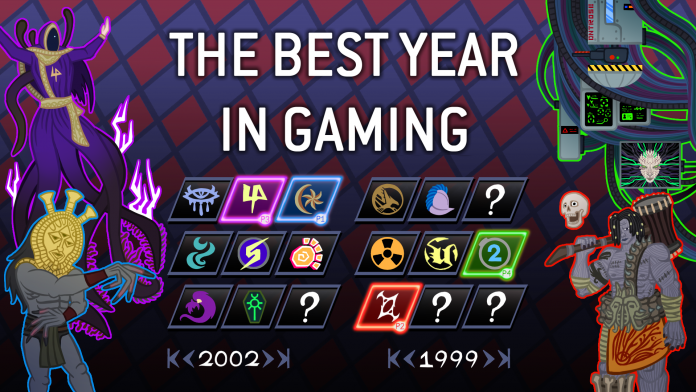Last year’s stacked lineup of games for the Game Awards had us thinking: What was the best year in gaming? As part of our series on determining gaming’s best year, we’re putting together an article on each year, charting the major releases and developments of the year, and talking about both their impact and what made them great.

The Year: 1975
Atari had shown that arcade cabinets could be profitable in 1972 and started to build on that success and then some in 1974, kicking off the golden age of arcades. And while arcade cabinets were replacing pinball machines in the United States, video game arcades were also springing up in Japan, and Japanese developers were becoming a major force in the industry, creating games which would make their way back to the US to become massive hits. The most important of these companies was Taito, who had published their first game, Elepong, in 1973 and had spent a great deal of time and energy reverse engineering Atari’s Pong. In 1975 Taito released Western Gun, and when Midway Manufacturing ported it to the United States as Gun Fight, it became the first arcade game to use a Microprocessor instead of discrete logic circuits. Gun Fight’s creator, Tomohiro Nishikado, saw that microprocessors were the future of gaming and would go on to develop with one for his next game – but we’ll talk more about that in 1978. For 1975, Taito’s Speed Race – released a year earlier and renamed to Wheels and Wheels II in the US – was the top-selling arcade game.
On both sides of the gaming spectrum – both on the tabletop and on computers – we’ll see a common theme emerge of “games trying to capture the magic of Dungeons & Dragons. Enthusiasm for the game would fuel both the first digital RPGs but also a series of tabletop imitators, swapping out genres and attempting to simplify the experience and condense it into a board game. Most of these would focus on the core gameplay of dungeon diving, killing monsters, and collecting treasure to level up, as those are the easiest things to model in video games.
Atari Brings the Arcade Home
After massive success in arcades, Atari made the jump to living rooms with the release of its Home Pong game console. The Home Pong console was a simple machine, capable of only playing Atari’s hit, released through Sears stores during the holiday season. It was an instant success.
Games Workshop Founded
In 1975 three friends – John Peake (who’d leave a year later), Ian Livingstone, and Steve Jackson (but not that Steve Jackson), would come together to found Games Workshop, making wooden boards for board games. They had an interest in print and the cutting edge of gaming, and would become the official distributor for Dungeons & Dragons in the UK. This would kick off a period of rapid growth which would see the company eventually expanding into wargames.
Microsoft Founded
Childhood friends and college dropouts Bill Gates and Paul Allen founded Microsoft (short for “micro-computer software”) in April 1975 with a plan of developing and selling BASIC interpreters for MITS’ Altair 8800 microcomputer. MITS agreed to distribute the interpreter and Gates and Allen were up and running. Microsoft will go on to be one of the largest and most influential companies in the world, but that’s a ways off; we’ll check back in with them in a few years, after they sell MS-DOS to IBM in 1980.
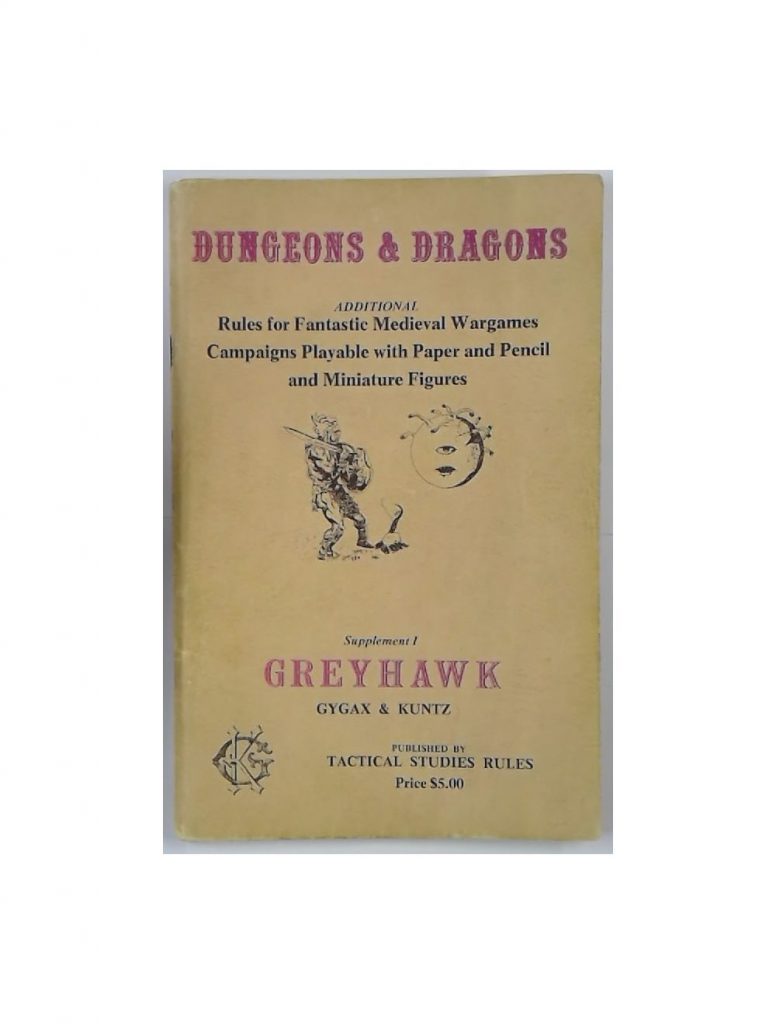
Greyhawk and Blackmoor Expand the Dungeons & Dragons Line
Greyhawk was the original supplement to D&D, published in 1975 and written by Gary Gygax and Robert Kuntz. The supplement introduced players to the world of Greyhawk, primarily through the house rules the pair of writers used in their home campaign, which included new classes (such as the thief and paladin), spells, and monsters. Greyhawk also made it much easier (read: possible) to run D&D combat without a copy of Chainmail sitting around. The original Greyhawk is lighter on worldbuilding/setting than you might expect – supposedly Gygax was still running his campaign with players and didn’t want to reveal his world’s secrets through a published book – but it does make Dungeons & Dragons into a much more playable game.
The second supplement in 1975 was Blackmoor, which added rules for new classes (assassins and monks), doing things underwater, and hit locations, so your players can finally be validated when they yell “I chop off his head” every time they make an attack. Unlike Greyhawk, Blackmoor wasn’t nearly as critical an expansion for D&D and so never got much in the way of reworkings, but it was still an important addition to those early D&D rules.

dnd
Dungeons & Dragons’ release in 1974 inspired a large number of computer programmers who fell in love with the game and were looking for ways to bring the experience to computer entertainment. The first wave of these landed a year after the game’s launch, and dnd was one of the first of them. dnd is a dungeon exploration game for the PLATO system in which players create a character and traverse a dungeon, collecting magical items and searching for the Orb and Grail in order to enter the Hall of Fame. The game’s dungeon contained multiple levels but allowed players to revisit them, making it one of the first nonlinear games in addition to being one of the first computer RPGs.
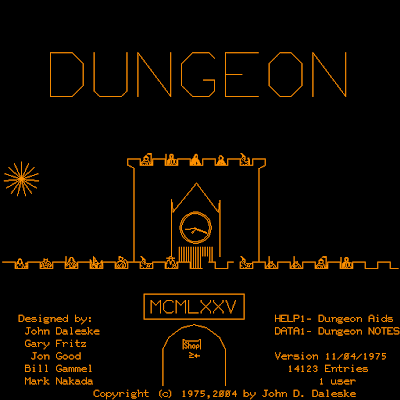
Dungeon
Designed by Don Daglow for the PDP-10 Mainframe, Dungeon was another attempt to bring the excitement of Dungeons & Dragons to computers. The game saw players direct a party of adventurers through a dungeon and included cool features like ranged combat, auto-mapping, and lines of sight. It sounds lovely, but playing it today is apparently literally technically impossible. Still, it’s another in a group of games attempting to create the dungeon-diving experience which would lead to Rogue a few years later.

Boot Hill
Only a year after Dungeons & Dragons, Gary Gygax partnered with Briam Blume to publish Boot Hill, a tabletop role-playing game set in the Wild West. The game dropped a number of D&D mechanics in exchange for percentile dice – one of the first tabletop games to do so – and a focus on shooting each other full of holes with guns. The game never really caught on in the US despite the notion that it’d capture Americans’ imaginations more, but it’s an early example of how the D&D formula could be adapted to other settings.

Dungeon!
A year after TSR published Dungeons & Dragons they published Dungeon!, a dungeon-crawling adventure game designed to simulate the experience of D&D. The game features a giant dungeon maze board and players take on the role of heroes (Elf, Hero, Superhero, Wizard), exploring the dungeon, dodging traps and fighting monsters. Players start in the middle of the board and as they move they’ll find secret doors and traps, rolling 2d6 to attack and trying to hit target numbers to hit defeat monsters which appear and drawing treasure cards based on the level of the enemy. The game feels quite a bit like a proto-HeroQuest or Talisman, albeit without a Zargon. It’s a game which holds up well and has been reprinted and revised many times.
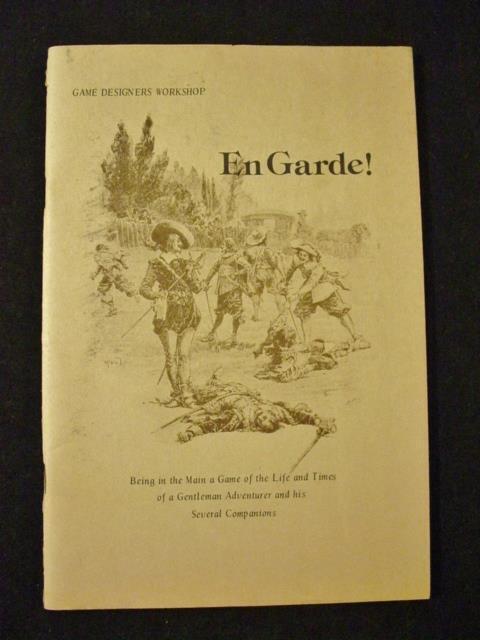
En Garde!
Games Designers’ Workshop published this swashbuckling RPG in 1975 designed to model the experience of playing the main character in an Errol Flynn movie, dueling opponents with a fencing blade and competing to gain status and move up in your career ahead of your rival players. It’s only kind of an RPG in that sense – the game encourages using a GM but it can largely run without one – and the game focuses pretty heavily on tactical fencing combat, with loads of tables to determine combat results. It’s a very deep game, albeit one with a very tight focus and it can be expanded into an RPG if you like or kept as simple as a dice-rolling game with friends.
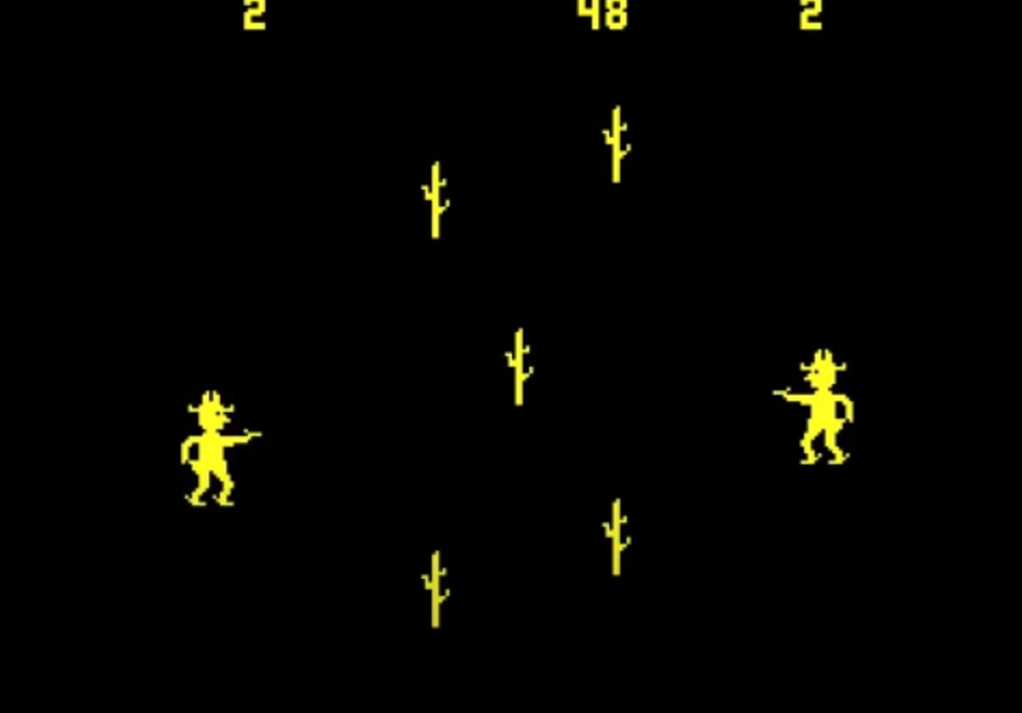
Gun Fight
The most popular arcade game of 1975, Gun Fight uses its status as the first game with a Microprocessor to deliver more detailed graphics, planting two cowboy characters in a desert as they move up and down and attempt to shoot each other. It’s a very simple dueling game in that sense, though as play progresses, more obstacles are added to the battlefield, such as cacti, trees, and wagons. Players progress until time runs out, at which point whoever has the most kills of the other player wins. It’s simple, but good fun and it’s the first twin-stick shooter, creating a genre which would become popular again decades later.
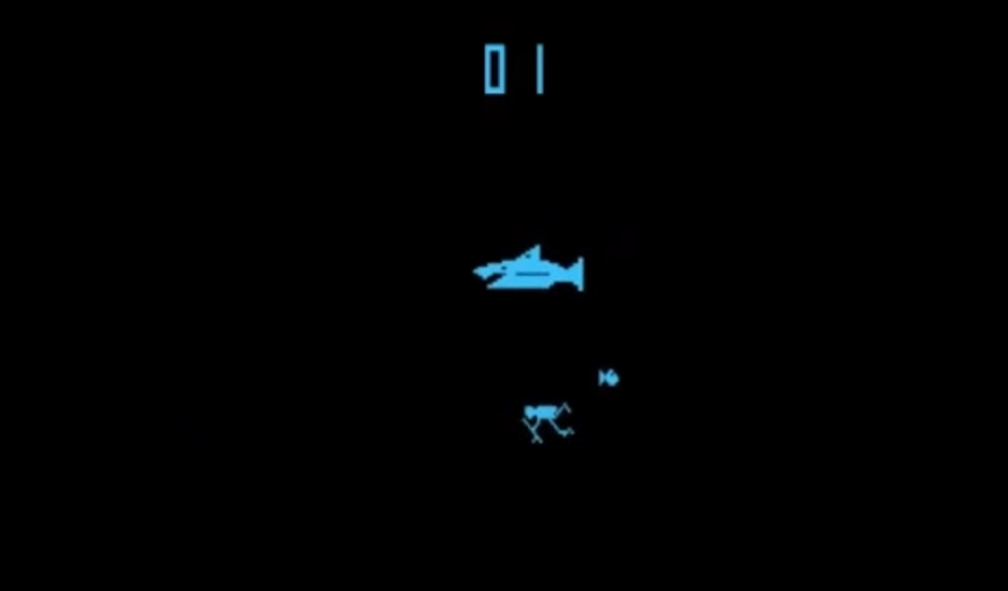
Shark JAWS
Developed by Atari subsidiary Horror Games (which itself was created as a way to avoid a potential lawsuit over the game’s title), Shark JAWS has players take on the role of a scuba diver collecting fish while evading a hungry shark. If the game seems designed to evoke imagery of the Spielberg film, well, it is. Arcade cabinets at the time put that “shark” part of the title in incredibly small print next to the “JAWS” part. The game is a decent time and one of the better-looking pre-microprocessor arcade games.
Why It Was the Best Year in Gaming
The biggest thing 1975 has going for it is that it finally made the original Dungeons & Dragons into a playable game through the Greyhawk expansion. Having a set of rules for combat disconnected from Chainmail is a big deal, as is having more variety when it comes to character classes. If you were a D&D player, you needed these expansions to make the game into what it could be, and there’s a good reason a lot of this content would make its way into the core rules later on.
On the arcade front, Gun Fight was really showing what games could look like in the coming years, and microprocessors would absolutely change the game. That said, Gun Fight was the tip of the iceberg, and it’s pretty easy to argue that the iceberg itself is the more interesting part. Still, if you were a D&D fan, 1975 had a lot to offer, both on the tabletop and on mainframe computers – if you had access to one.
This article is part of a larger series on the best year in gaming. For more years, click this link. Have any questions or feedback? Drop us a note in the comments below or email us at contact@goonhammer.com.
